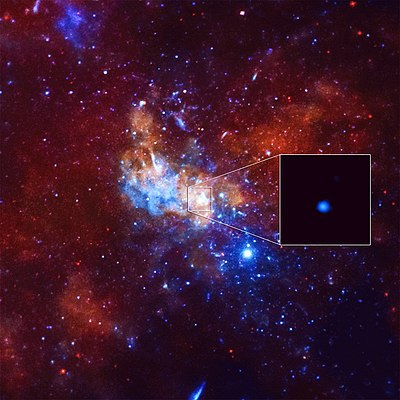利用者:Bluedot/sandbox
 |
ここはBluedotさんの利用者サンドボックスです。編集を試したり下書きを置いておいたりするための場所であり、百科事典の記事ではありません。ただし、公開の場ですので、許諾されていない文章の転載はご遠慮ください。
登録利用者は自分用の利用者サンドボックスを作成できます(サンドボックスを作成する、解説)。 その他のサンドボックス: 共用サンドボックス | モジュールサンドボックス 記事がある程度できあがったら、編集方針を確認して、新規ページを作成しましょう。 |
記事執筆時の参照先
[編集]出典・参考文献の記述
[編集]- Wikipedia:出典を明記する
- Wikipedia:出典テンプレート
- Template:Cite book - 書籍
- Template:Cite journal - 学術誌・雑誌・論文
- Template:Cite web - ウェブサイト
- Template:Cite news - 新聞記事
- Template:Cite press release - プレスリリース
- Template:Cite report - レポート
数式などの記述
[編集]画像利用
[編集]金子メモ
[編集]https://twitter.com/alpe_terashima/status/1108743735553097729 『週刊こどもニュース』に出演歴があるらしい。
ジョンバール分岐点
[編集]『Q.E.D.』12巻「銀河の片隅にて」にジョンバール分岐点への言及が出てくるらしい。アシモフ『永遠の終り』にも?
いつか翻訳したい
[編集]- Wikipedia:多数の言語版にあるが日本語版にない記事/天文
- Non-rocket spacelaunch - Wikipedia - ロケット以外による宇宙への打ち上げについて。
- Avro Canada VZ-9 Avrocar - Wikipedia - アブロカー。
- WaveRider - Wikipedia - ウェーブライダー。
535年から536年の異常気象現象。火山活動だけでなく、彗星や小惑星の衝突だったのではないかという説もある。以下は参考になりそうな資料。
- デイヴィッド・キーズ『西暦535年の大噴火 人類滅亡の危機をどう切り抜けたか』(文藝春秋、2000)原題:Catastrophe
- ブライアン・フェイガン『古代文明と気候大変動 人類の運命を変えた二万年史』(河出書房新社、河出文庫、2008)原題:The Long Summer: How Climate Changed Civilization
- 紀元536年に起こった彗星衝突? - AstroArts 天文ニュース
- MEF-小天体探査フォーラム|ジャンクボックス|太陽系惑星探査の世界・「はやぶさ2」が探査する小惑星~第一編~
- 天文現象・天文古記録の検証・考察 『日本書紀』内の日食記録 - 浜松スペースハンタークラブ
超大質量ブラックホール
[編集]超大質量ブラックホールに英語版の記述を反映したい。
In the Milky Way
[編集]
Astronomers are very confident that the Milky Way galaxy has a supermassive black hole at its center, 26,000 light-years from the Solar System, in a region called Sagittarius A*[2] because:
- The star S2 follows an elliptical orbit with a period of 15.2 years and a pericenter (closest distance) of 17 light-hours (1.8×1013 m or 120 AU) from the center of the central object.[3]
- From the motion of star S2, the object's mass can be estimated as 4.1 million M☉,[4][5] or about 8.2×1036 kg.
- The radius of the central object must be less than 17 light-hours, because otherwise, S2 would collide with it. In fact, recent observations from the star S14[6] indicate that the radius is no more than 6.25 light-hours, about the diameter of Uranus' orbit. However, applying the formula for the Schwarzschild radius yields just about 41 light-seconds, making it consistent with the escape velocity being the speed of light.
- No known astronomical object other than a black hole can contain 4.1 million M☉ in this volume of space.
The Max Planck Institute for Extraterrestrial Physics and UCLA Galactic Center Group[7] have provided the strongest evidence to date that Sagittarius A* is the site of a supermassive black hole,[2] based on data from ESO's Very Large Telescope[8] and the Keck telescope.[9]
On 5 January 2015, NASA reported observing an X-ray flare 400 times brighter than usual, a record-breaker, from Sagittarius A*. The unusual event may have been caused by the breaking apart of an asteroid falling into the black hole or by the entanglement of magnetic field lines within gas flowing into Sagittarius A*, according to astronomers.[10]
- ^ Eisenhauer (2005). “SINFONI in the Galactic Center: Young Stars and Infrared Flares in the Central Light-Month”. The Astrophysical Journal 628: 246–259. arXiv:astro-ph/0502129. Bibcode: 2005ApJ...628..246E. doi:10.1086/430667.
- ^ a b Henderson, Mark (December 9, 2008). “Astronomers confirm black hole at the heart of the Milky Way”. London: Times Online 2009年5月17日閲覧。
- ^ Schödel, R. (17 October 2002). “A star in a 15.2-year orbit around the supermassive black hole at the centre of the Milky Way”. Nature 419 (6908): 694–696. arXiv:astro-ph/0210426. Bibcode: 2002Natur.419..694S. doi:10.1038/nature01121. PMID 12384690.
- ^ Ghez, A. M. (December 2008). “Measuring Distance and Properties of the Milky Way's Central Supermassive Black Hole with Stellar Orbits”. Astrophysical Journal 689 (2): 1044–1062. arXiv:0808.2870. Bibcode: 2008ApJ...689.1044G. doi:10.1086/592738.
- ^ Milky Way's Central Monster Measured
- ^ Ghez, A. M.; Salim, S.; Hornstein, S. D.; Tanner, A.; Lu, J. R.; Morris, M.; Becklin, E. E.; Duchêne, G. (May 2005). “Stellar Orbits around the Galactic Center Black Hole”. The Astrophysical Journal 620 (2): 744–757. arXiv:astro-ph/0306130. Bibcode: 2005ApJ...620..744G. doi:10.1086/427175.
- ^ UCLA Galactic Center Group
- ^ ESO - 2002
- ^ “| W. M. Keck Observatory”. Keckobservatory.org. 2013年7月14日閲覧。
- ^ a b “RELEASE 15-001 - NASA’s Chandra Detects Record-Breaking Outburst from Milky Way’s Black Hole”. NASA (5 January 2015). 6 January 2015閲覧。

